How to Manage Sub-Account Functions and Frequently Asked Questions
What is a Sub-Account?
Sub-account allows you to trade through multiple accounts. You can use it to clearly divide responsibilities and manage transactions more efficiently and securely.

Sub-account function is available for corporate account users and VIP1 (or higher) personal account users (KYC identity authentication and Binance/Google authentication are required).
Sub-account functions and management
Sub-account Management Features Overview
Function
Description
Remark
Account Management
Create a sub-account management center and choose to freeze or unfreeze all functions of each sub-account when needed. For example, you can toggle on Margin account, Future account, and enable BLVT for sub-accounts; you can also change the password of sub-accounts directly from the master account.
The number of sub-accounts you can own depends on the respective VIP level of the master account
API Management
Create and edit sub-account API KEYs and API access.
Each sub-account can create up to 30 API KEYs, which can be used to place orders/enquiries/positions/orders etc. through the sub-account in the public API interface
Asset Management
You can check the balance of the master account and all sub-accounts. Simply click [Transfer] to transfer the assets between the master account and sub-accounts instantly without any fees.
Either in the value of BTC or fiat
Orders Management
You can check the [Open Orders], [Order History], and [Trade History] of all your sub-accounts.
You can also filter orders by dates and trading pairs
Transfer History
You can check the fund transfer history of all accounts by choosing [Transfer from] or [Transfer to].
Login History
You can check all sub-account login history by date, IP address, and location.
How to create a Sub-Account?
1. Click [Profile] - [Sub-Accounts].
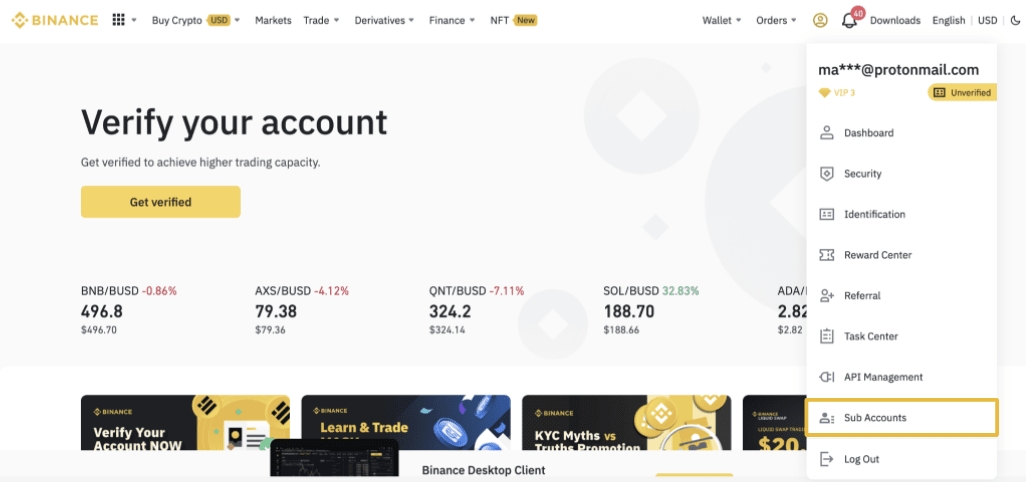
2. Click [+ Create Sub Account].
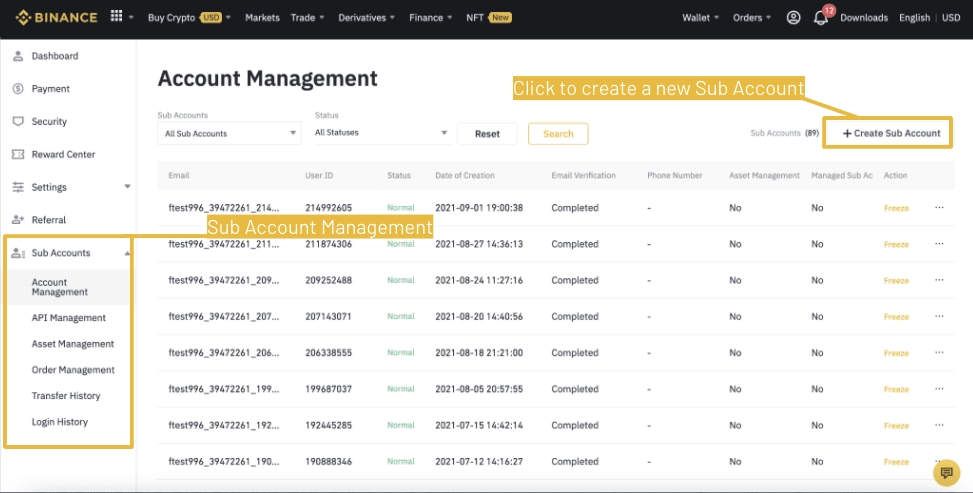
3. Enter the email address for your sub-account. You can use either a regular email or a virtual email. Then create a password and click [Create Sub Account].
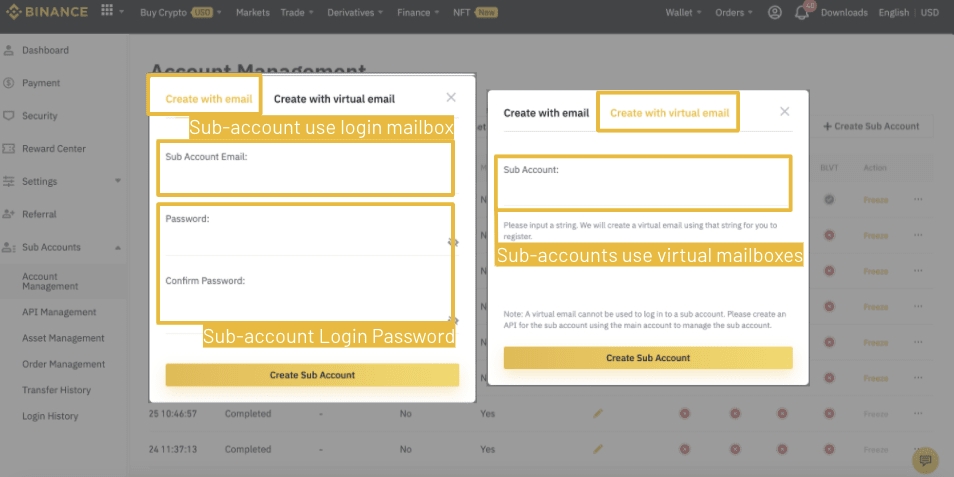
Tips:
Please note that you need to verify your email address after account creation;
When you create a sub-account with a virtual email, that sub-account can only be operated by the master account through API.
4. Once the sub-account is successfully created, it can be viewed in the account management list, where you can manage your account permissions.
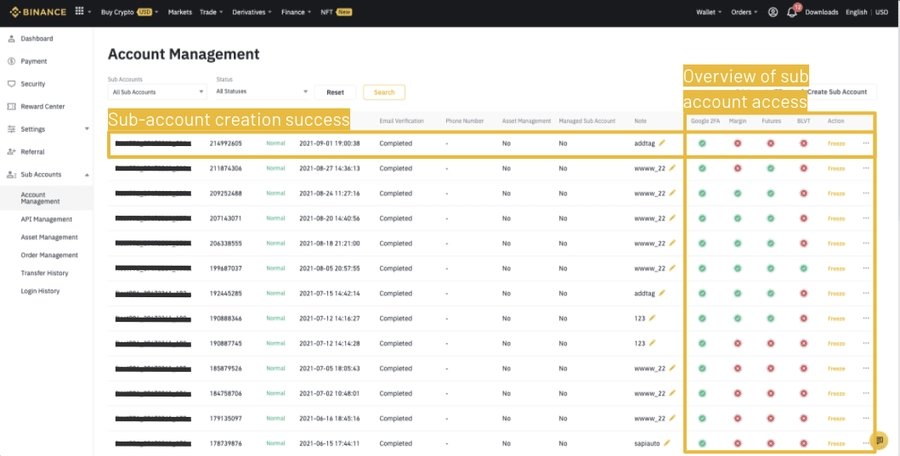
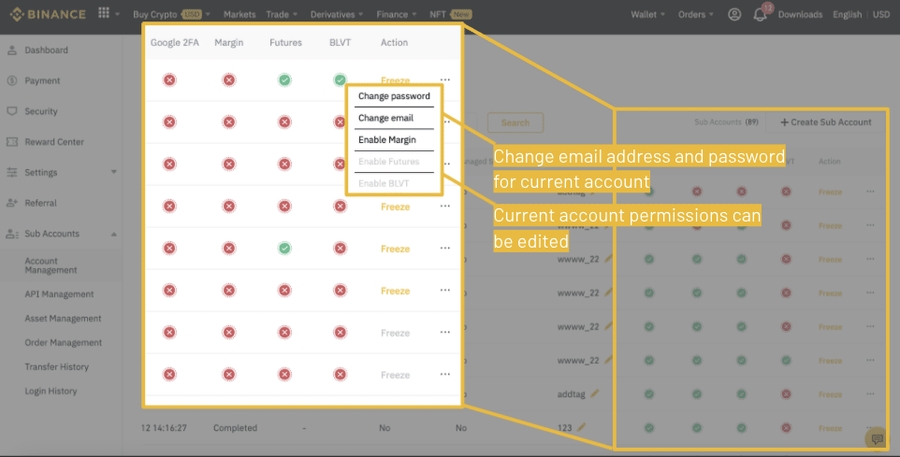
How to manage sub-account permissions?
API Management: To create a sub-account API KEY, go to [API Management] and click [Create API]. You can also edit the sub-account API permissions here. Simply click [Modify] to edit.
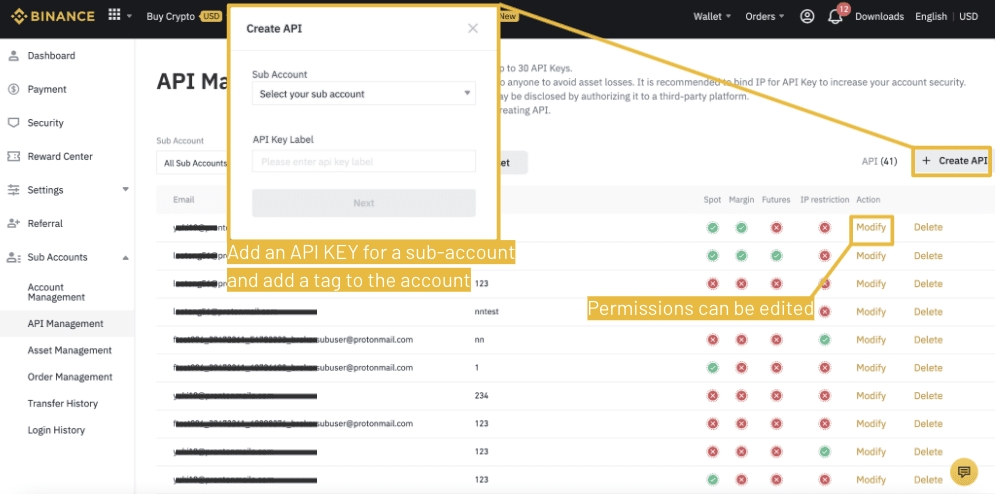
Asset Management: You can check the balance of the master account and all sub-accounts, either in the value of BTC or a fiat currency. Simply click [Transfer] to transfer assets between the master account and sub-accounts instantly without any fees.
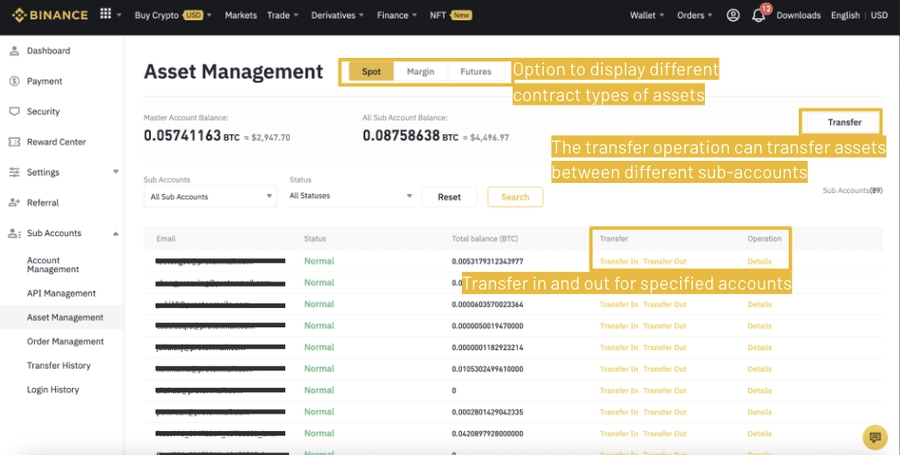
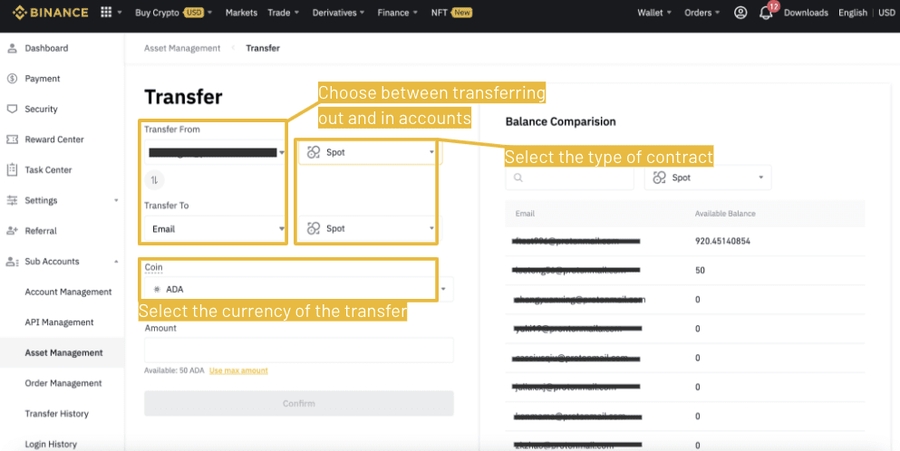
Order Management: You can check [Open Orders], [Order History], and [Trade History] of all your sub-accounts. You can also filter orders by dates and trading pairs.

Transfer History: You can check the fund transfer history for all accounts by choosing [Transfer from] or [Transfer to].
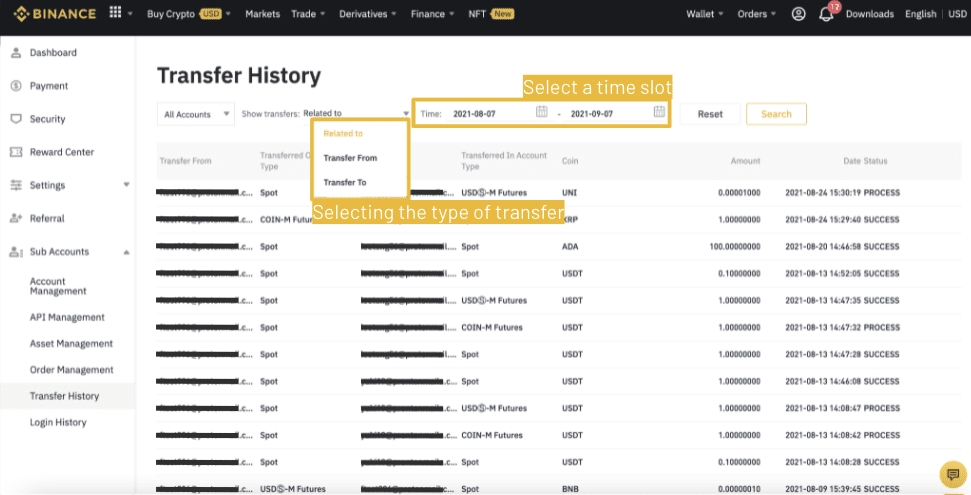
Login History: You can check all sub-account login history by date, IP address, and location.

Last updated